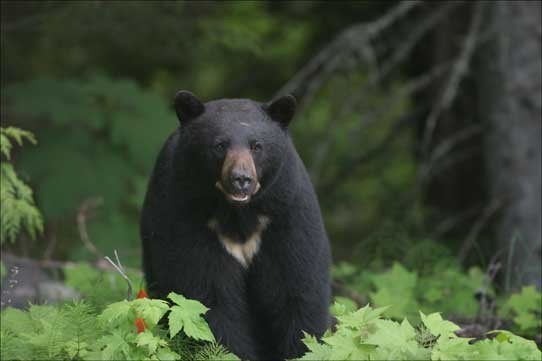By Michael Allen
The peak of the breeding period continues through mid-June, and usually ends with the start of the berry season.
Bears will experience a hormonal trigger in early August that pushes them to feed over 15 hours a day on blueberries, huckleberries, and Sitka-mountain ash berries. However, due to the continuation of cooler, darker spring days, berry phenology (development) is late.
Blueberries may ripen as early as mid-June and usually by early July. Berries at Lost Lake are still only three-quarters swelled and green. Oval-leaf blueberry ripens first followed by Alaskan blueberry and black huckleberry. Red huckleberry ripens in late summer. Black twinberry has been ripening since early June in the valley but is limited in abundance.
With ideal weather and berry ripening, bears usually have three to four months to feed on about 10 major berry species. Depending on where a bear lives (ski area or valley) days of berry feeding may be reduced to two months.
The greatest damage to the berry crop is at high elevations (>1,200 metres) during late August through September. If we lose this crop, as we did in 2004, bears will push into the valley looking for alternate food sources. If July berries delay until August and August berries delay until September that's still relatively okay because bears will continue to graze through July and feed heavily on collonial hymenopterans (ants and bees) until berry ripening in August.
For valley berries to continue ripening for July and not rot, we need more sunny, warm days. If you spot a bear family please call me at 604-902-1660 or e-mail mallen_coastbear@direct.ca. If you see a tagged or collared bear close to people or garbage call 604-905-BEAR (2327). Thanks for everyone’s help.




